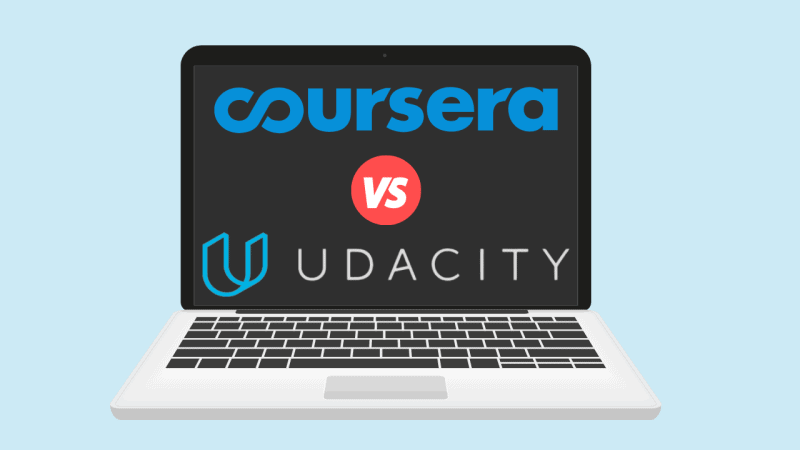
Udacity and Coursera are two well-known e-learning platforms that both started in 2012. But they have taken rather different approaches to how they deliver education.
Udacity is much more focused on technology and business. They team up with top companies in cutting-edge industries to teach the practical ins and outs of today’s most technologically-advanced fields.
Coursera, on the other hand, is aligned primarily with higher education institutions around the globe. So it has more diverse course offerings, as well as more academic-oriented teaching methods and end goals.
What does all this mean for you as an online learner? We’ll endeavor to answer that question as we compare and contrast the services that these two websites provide.
What is covered in this article
We’ll start with a quick side-by-side comparison of Udacity and Coursera’s features. We’ll also provide a discussion of how they stack up when it comes to teaching some of the most popular modern technology skills. Then we’ll dive into detailed talks about each platform’s key strengths and advantages over the other.
Udacity vs. Coursera overview: comparison table
Udacity is more of a niche e-learning website than Coursera is, with a small course library focused on specific technology-related and business-related subjects. Though Coursera teaches some of these topics, too, it has a much larger and more diverse course library.
Udacity is also structured to help learners jump right into job-hunting after they complete a course. While this is sometimes possible on Coursera as well, Coursera accommodates a broader range of learning goals, from upskilling to gaining official academic credentials.
| Feature | Udacity | Coursera |
|---|---|---|
| Brief Summary | Technology and career skill training in partnership with the world’s top technology companies | Higher education from top universities and corporations, delivered in an online format |
| Best Uses | Students in the English-speaking world looking to quickly transition into an in-demand tech career | International students with broad interests and/or learning goals (including academic accreditation) |
| Pricing | ||
| Total Courses | 250 | 4500+ |
| Course Categories | ||
| Educators | Industry professionals with at least 5 years of work experience and at least 1 year of teaching experience | Mainly university & college professors; some industry professionals |
| Course Structure | ||
| UI Languages | English | |
| Accreditation | None, though many who pass Nanodegree programs are hired by Udacity’s tech partners | Certain courses and programs |
Udacity and Coursera also handle focusing on semi-specific areas of study a bit differently. Coursera has multi-course packages called “Specializations”, whereas Udacity has singular, broad, overarching super-courses called “Nanodegrees”. We’ll compare those now, as well as how proficient both websites are in teaching certain in-demand technology subjects.
Udacity Nanodegree vs. Coursera Specialization
A Udacity Nanodegree is a curated course designed to help you learn and demonstrate skills related to a particular application. Compared to a Coursera Specialization, it comes with many extra support services, such as career assistance (after you finish) and on-demand technical help while studying. But it’s very pricey and fast-paced.
A Coursera Specialization is a set of courses related to a specific topic. It culminates in a “capstone” project (or series of projects) or course, where you demonstrate your skills. Its main draw over a Nanodegree is that it’s much less expensive. However, it offers fewer supporting services.
For a more detailed breakdown, see our article on Udacity Nanodegrees vs. Coursera Specializations.
Machine learning: Udacity vs. Coursera
Coursera is better for machine learning than Udacity. Coursera has over 40 courses directly related to machine learning, and over 80 others in related fields or various languages. Udacity has 4 courses specifically about machine learning, plus about 10 more that incorporate related skills and concepts.
Both platforms have programs that are run by (or at least in collaboration with) top tech companies, such as IBM and Amazon. Udacity does score points for streamlining the learning path with its niche in tech education. But Coursera wins out with the sheer number of courses it offers, not to mention accessibility by making these courses available in various languages other than English.
Interested in learning more? Check out our full review of Udacity vs. Coursera: Machine Learning.
Deep learning: Udacity vs. Coursera
Coursera is marginally better for deep learning than Udacity. Coursera has about 13 courses specifically about deep learning, with about 35 more on related subjects. In total, Udacity has two courses strictly on deep learning, plus over 10 more that involve similar principles and skill sets.
Udacity’s courses on deep learning are top-notch and made in partnership with leading companies like Amazon Web Services, Facebook Artificial Intelligence, Unity, and the Nvidia Deep Learning Institute. But it just can’t match up to the volume of courses available on Coursera – not only from universities, but also from companies like DeepLearning.ai, IBM, and Google Cloud.
Coursera vs. Udacity: data science
Coursera is marginally better for data science than Udacity. It has over 60 courses and 5 online degrees directly related to data science, as opposed to only about 20 courses on Udacity. This is likely because data science is being taught at many major universities now, as it is an in-demand field.
Udacity is no slouch when it comes to data science, though. Data science is one of their major “schools” of courses. In addition, many of the courses there have been developed in conjunction with the industry’s leading players, such as Insight, Kaggle, IBM, Mode, Tableau, and Alteryx. So you probably won’t go wrong choosing either website here.
Self-driving cars courses on Coursera vs. Udacity
Udacity is better for self-driving car courses than Coursera. Coursera has 4 courses (1 Specialization) on self-driving cars from the University of Toronto. Udacity has only 3 courses on self-driving cars, but they were created in partnership with top brands such as Mercedes-Benz, Nvidia, and Uber.
This is a difficult one to call because there are a lot of other topics related to self-driving cars, such as mathematics, robotics, software programming, and machine learning. We’ll give this one to Udacity because they have an entire discipline dedicated to autonomous machines (including flying cars!), have made their courses with the help of brands actually using the technology, and have overall better streamlined learning of the prerequisite related topics.
We have more in our article on Udacity vs. Coursera: Self-Driving Cars Programs.
Udacity: the best for those wanting to jump-start a cutting-edge tech career
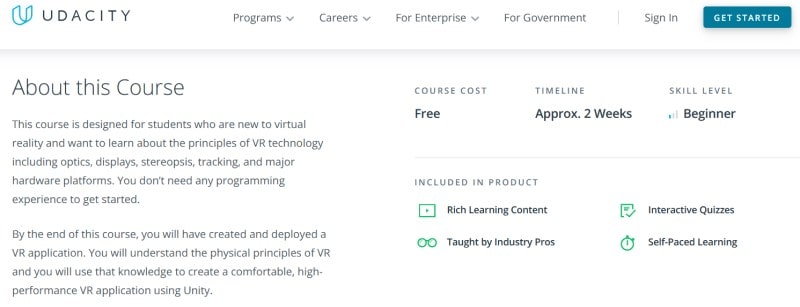
(Image credit: Udacity)
Udacity is great for those looking to dive head-first into some of the most in-demand job markets of today… or even tomorrow! Though Udacity’s course library is relatively small, it is sharply focused on teaching the skills needed to thrive in the hottest emerging technology and business fields. Many of its courses were created in collaboration with a number of very successful companies from around the world – Mercedes-Benz, Amazon, Facebook, IBM, Nvidia, and Uber, to name a few. And they are all taught by experienced industry pros.
Almost ⅔ of Udacity’s courses are free to take, while the rest are called “Nanodegree” programs. Though they are expensive, you can pay for access to them month-to-month, or get a discount by paying for multiple months at a time. Nanodegrees offer premium features such as practical real-world industry projects to complete, on-demand technical study help, and career assistance to get you ready to job-hunt after you complete your program. Finally, while there are very few opportunities to get official academic accreditation on Udacity, one of its corporate partners may just hire you after you finish a Nanodegree program!
What is Udacity and what are its benefits?
Best for: English-speaking students looking to jump right into a job or career in a cutting-edge technology or business field
Cost: Most courses are free; Nanodegree programs cost ~$400 per month (or ~$200-300 per month for suggested completion time frames)
Udacity was created in 2012 based on an experiment by Stanford University professors Sebastian Thrun and Peter Norvig. The previous year, they had offered their “Introduction to Artificial Intelligence” course on the Internet for free. When their test was significantly successful – over 160,000 students from over 190 countries enrolled – they decided to take their experiment further and develop a platform to democratize education. Now, Udacity is a hub for learning about the latest technologies and the skills needed to work with them, in order to train people for today’s most in-demand careers.
Top benefits of using Udacity
Udacity is geared towards teaching skills meant to be used in workforces on the cutting edge of technology. Here are a few highlights of how it does that.
-
Train for the jobs of the future — Udacity’s forte is lessons about some of today’s most advanced technological fields. These include artificial intelligence, cloud computing, and autonomous systems. If you’re looking to pursue an in-demand tech job, Udacity’s a good place to start!
-
Professional projects, professional help — Nanodegrees give you hands-on opportunities to solve real-world technical problems. There to guide you are teachers who are veterans of their respective industries. You’ll also have access to on-demand help from skilled individuals if you get stuck!
-
Get a head start on the job hunt — All Nanodegree programs include post-completion career services, so you can get help with optimizing your portfolio before you set out to look for a job. You may even get hired by one of Udacity’s corporate partners!
Udacity is better than Coursera when…
- You’re looking to get into a cutting-edge technology field, such as self-driving vehicles.
- You may need a bit of extra hands-on technical help over the course of your studies.
- You want to go job-hunting right after you finish your program.
10 top Udacity courses to try
Over 180 courses on Udacity are free to take. The following is a selection of Beginner-level courses across each of Udacity’s main disciplines. There are also Intermediate and Advanced courses and programs, too, so there’s much more to see!
-
Intro to Physics — Take miniature virtual tours of Italy, the Netherlands, and the United Kingdom as you learn the concepts behind the most important modern discoveries in physics… on location from where they first happened!
-
Intro to HTML and CSS — Learn how to use these two fundamental Internet coding languages to create and format basic websites, and how to interpret and utilize them in a browser’s developer tools.
-
Intro to Psychology — A course run in partnership with San José State University that provides an overview of major psychology principles and concepts, leading to a better understanding of how people think and act.
-
Intro to Data Analysis — Along with a bit of coding in Python, this course will teach you the steps to analyzing data: questioning, arranging and accounting for any errors, finding patterns, drawing conclusions or making predictions, and communicating what you have found to others.
-
Problem Solving with Advanced Analytics — In this course, you’ll learn how to apply data analytics models – including linear regression – to identify patterns and solve problems in a business & finance capacity.
-
Managing Remote Teams — As online remote working surges in popularity, this course will give you the know-how to effectively hire, manage, and get the best out of your workforce when you can’t all be under one roof.
-
Intro to Cloud Computing — After learning some basic concepts about cloud computing – including why it’s advantageous and how it can be set up – you’ll be able to practice with Amazon Web Services to see how it works and what you can do with it.
-
Self-Driving Fundamentals — Using the Apollo software architecture, you’ll learn about the key components of self-driving cars and their functions: determining location, analyzing surroundings, predicting nearby events, planning routes, and controlling operations.
-
Intro to Descriptive Statistics — A course that teaches you the basic ways to describe data so you can analyze it, interpret it, and predict outcomes from it.
-
Refresh Your Resumé — Learn how to craft a resumé targeted specifically for the technology industry that will land you interviews with the companies you want to work for.
Coursera: the best for well-rounded education that can get you credit
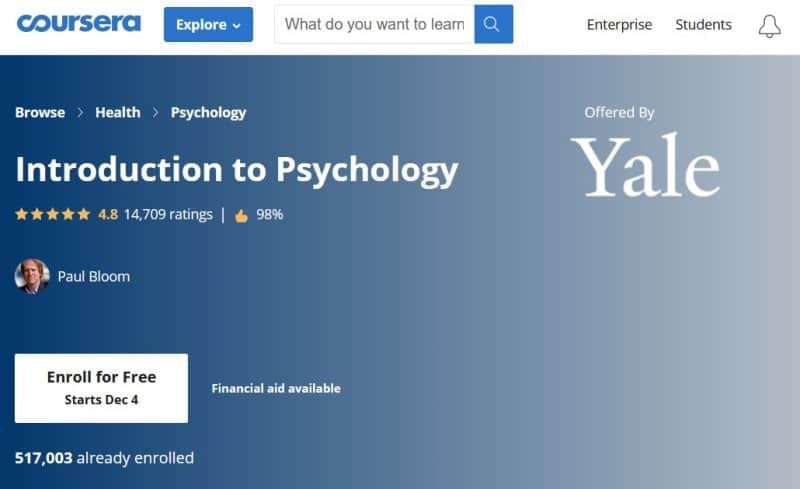
(Image credit: Coursera)
Coursera’s a better pick than Udacity for an e-learning platform if you’re looking for subjects other than those on futuristic tech, or if English isn’t your first language. Drawing from top universities around the world, Coursera has a much larger course pool that contains a much broader range of topics. In addition, its interface and courses are available in multiple languages.
Coursera supports both casual learning and professional certification, like Udacity does. However, it also gives official academic accreditation for some programs. This can range from earning credit towards your current real-world university program to pursuing a full degree online!
What is Coursera and what are its benefits?
Best for: International students with broad subject interests and academic-oriented learning goals
Cost: Free courses available; $40-$100 to get a course certificate, $40-$90/month for Specialization course packages or Professional Certificates; $2000+ for MasterTrack certificates; $9000+ for Online Degree
Coursera was launched in 2012 by Stanford University computer science professors Daphne Koller and Andrew Ng. It has since partnered with over 200 of the world’s leading universities and corporations to create one of the largest and most popular MOOC (massively-open online course) platforms. With over 4500 courses, Coursera aims to bring the experiences and benefits of higher education to a global audience.
Top benefits of using Coursera
Coursera is a well-known e-learning website with a large and diverse course library. Its interface and lectures also have multilingual support, so it’s more accessible than Udacity to students who may have an easier time learning in a language other than English. Coursera also has programs that grant academic credit or certification, which Udacity lacks.
-
A diverse learning platform — Coursera has a wealth of courses on various subjects and presented in numerous languages. So no matter where you live or what you’re interested in, you’re bound to find something you can dive into learning.
-
Learn from the best — All of Coursera’s courses are taught by instructors at prestigious colleges and universities around the world, or by corporate trainers from the world’s leading companies. So you’re getting a similar quality of education as if you actually went to those places yourself – just with a bit more flexibility!
-
Take the credit… literally — Many courses on Coursera allow you to pay in order to have your assignments evaluated. If you pass the course, you get a certificate that you can add to your portfolio in order to show off your skills. Specific paid programs may also get you professional certifications, academic credit, or even a full degree!
Coursera is better than Udacity when…
- Your interests lie in subjects other than technology and business.
- You’re focusing on academics and may not be quite ready to jump into a career.
- English isn’t your first language.
10 top Coursera courses to try
As of early 2021, these are some of the hottest courses on Coursera. With over 4500 courses, Coursera has lessons on many more topics for learners of various skill levels. Some of them are part of larger “Specialization” packages – some of which can grant you preparedness for technical certification, credit towards an academic degree you’re currently pursuing, or even a full online degree! There are lots of options, so check them out!
-
Learning How to Learn (University of California, San Diego / McMaster University) — This course explains the different ways the human brain processes and stores information as the foundations for teaching you tips for improving your memory, beating procrastination, and using your time efficiently on homework or tests.
-
Programming for Everybody (University of Michigan) — Python is one of the most popular modern computer programming languages, and this course will teach you how to use it to create a basic application with minimal math or tech expertise!
-
Predictive Analytics and Data Mining (University of Illinois) — An intermediate-level course that teaches business managers how to reliably collect, analyze, and visualize data so it can be used to make decisions for their organization.
-
Introduction to Psychology (Yale University) — A course that offers an overview of current scientific research into patterns of human thought and behavior, including how they develop in the brain, why they differ between people, and how they are impacted by injuries or illnesses.
-
Financial Markets (Yale University) — Aimed at training the financial leaders of the future, this course introduces the concepts of risk management and behavioral finance to make sense of things like banks, stocks, and insurance.
-
AI for Everyone (DeepLearning.ai) — A largely non-technical course that explains common AI terminology, examines what AI can (and can’t) realistically do, demonstrates how to develop or deploy AI-based solutions for an organization, and discusses ethical and social issues surrounding artificial intelligence.
-
The Science of Well-Being (Yale University) — Learn how your brain’s instincts can sometimes sabotage your own happiness, why people believe certain things about happiness that aren’t true, and how you can take steps – backed by scientific research – to increase your productivity while boosting those good feelings.
-
Introduction to Cloud Computing (IBM) — In this course, you will learn what cloud computing is, where it came from, how it works, how to keep it secure, and what it can potentially be used for in business and beyond.
-
Japanese for Beginners (St. Petersburg State University) — Take your first step towards understanding Japan’s society and culture by learning to read, write, speak, and comprehend its language: characters, grammar, phonetics, communication etiquette, and more!
-
Finding Purpose and Meaning in Life (University of Michigan) — See where science, philosophy, and lived experience collide to help some of the most prominent people in history find a purpose for their lives, and how you can use this intersection to start living for what matters most to you!
5 Udacity & Coursera alternatives for e-learning
Online learning has really taken off since the late 2000s and early 2010s, and now there are hundreds of popular virtual course websites and apps out there. Coursera and Udacity are just two of them; here are five more to look into.
1. Udemy

(Image credit: Udemy)
Best for: Learning pretty much anything that can be taught, often at a discount
Cost: $20-$200 for lifetime access to a course; some courses are free
Udemy is an open online learning marketplace. That means if something can be taught, somebody can teach it on Udemy for a price (though Udemy does have standards, including restricting some sensitive or illegal topics). With over 130,000 courses, you can learn anything from software development to how to play an instrument to accounting practices to psychological techniques for being happier in life!
Membership is on a course-by-course basis, so once you’ve paid for a course, you can come back to it whenever you want as long as it stays on Udemy. Instructors set prices for courses, but Udemy is constantly having sales, so most courses cost very little money to take. You may even be able to find some free courses!
2. Pluralsight
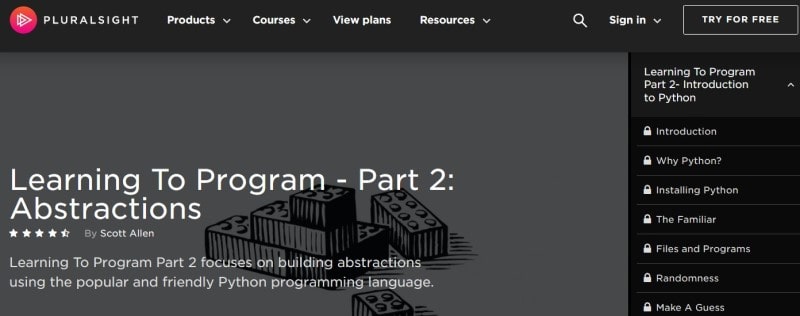
(Image credit: Pluralsight)
Best for: Assessing and refining your technology skills at your own pace
Cost: $25-$37 per month for individuals; $48-$65 per month for teams (per user)
Pluralsight has a similar focus to Udacity: training people in the skills they need to succeed at modern technology-based and skilled trades jobs. Its “Skill IQ” and “Role IQ” assessments give you overviews of, respectively, what you know well enough already and what you need to know for the job you want. From there, you can follow a curated learning “Path” in a specific topic, or create a custom “Channel” program tailored to your unique learning goals. Pluralsight’s courses are totally on-demand, so you can dive in and work on them wherever and whenever you have access to them without waiting for them to open.
3. Skillshare
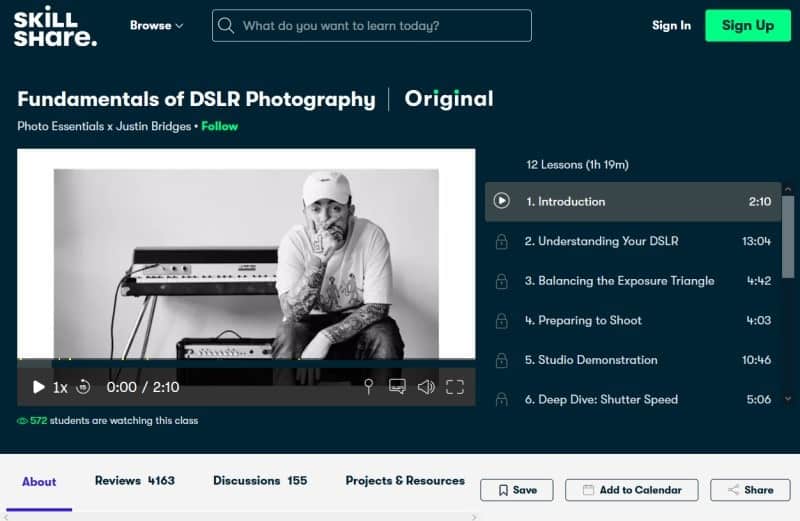
(Image credit: Skillshare)
Best for: People who enjoy hands-on learning and/or working on collective projects
Cost: $12-$20 per month; some courses are free
If you prefer learning things by actually doing them instead of simply reading stuff out of a book or listening to a seminar, then Skillshare was made for you. It’s an e-learning platform that focuses on preparing you for jobs where you create and build: animators, photographers, music producers, web designers, entrepreneurs, and more. On Skillshare, you don’t just learn the skills you need for your job; you practice them with daily exercises. You might even collaborate on a group project with other users! So what are you waiting for? Get making!
4. MasterClass

(Image credit: MasterClass)
Best for: Learning directly from a celebrity you’re a fan of
Cost: $180 per year; 30-day money back guarantee
If you’re ready to learn from the masters, then class is in session! MasterClass brings together over 100 of the most celebrated professionals in their respective fields to give you crash courses on how to ply their trades. Learn from video seminars featuring Robin Roberts, Martin Scorsese, Natalie Portman, Steve Martin, Penn & Teller, RuPaul, and more! Then discuss what you’ve learned with fellow course-takers, and use practice exercises in a course’s accompanying workbook to demonstrate your skills. If you’re lucky, the course instructor themselves may grade some of your work!
5. LinkedIn Learning

(Image credit: LinkedIn Learning)
Best for: Training both “hard” and “soft” workplace skills
Cost: $25-$35 per month; one month free trial
Lynda.com’s new home is as part of LinkedIn, the popular business-oriented social network. Its goal hasn’t changed, however: to teach you the knowledge and skills that today’s employers are looking for. LinkedIn Learning has over 15,000 courses on both general professional skills and workplace-specific applications. And if you have a profile on LinkedIn, you can add certificates for courses you complete to it to show off your hard work and competencies. Who knows… they just might help you land your next big position!
That’s all for our head-to-head showdown between Udacity and Coursera! If you’re still on the fence, maybe you’d like to see how these two e-learning websites stack up against a few others of their kind. In that case, we suggest reading our comparisons of Coursera with Pluralsight, edX, or several other competitors. You can also read our analysis of where Udacity stands in relation to Udemy, LinkedIn Learning, and Pluralsight!






